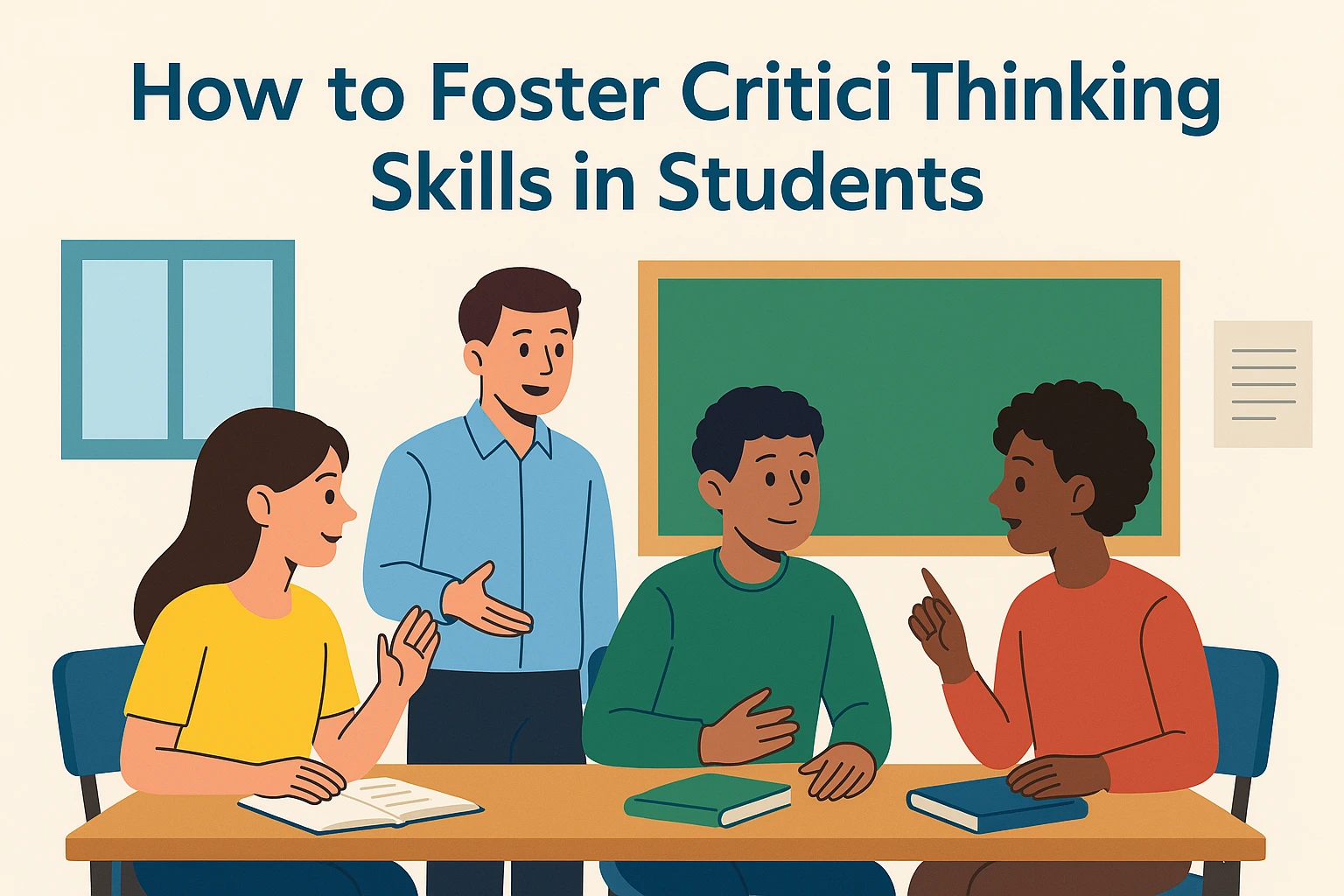🎓 How to Foster Critical Thinking Skills in Students: Practical Strategies
Introduction
Critical thinking is one of the most important skills students can develop. It helps them analyze information, solve complex problems, and make thoughtful decisions — essential abilities for success in school and life.
However, fostering critical thinking skills requires more than just asking students to memorize facts. It involves creating a classroom environment where curiosity, questioning, and deep analysis are encouraged daily.
💡 Why Foster Critical Thinking Skills in Students Matters
Students who think critically are better equipped to handle new challenges, understand different viewpoints, and avoid misinformation. According to Edutopia (external authority link), students who practice critical thinking become more engaged and take ownership of their learning.
📌 Practical Strategies to Foster Critical Thinking
✅ 1. Ask Open-Ended Questions
Encourage students to explain their reasoning, not just give one-word answers. Questions like “Why do you think that?” or “What evidence supports your idea?” promote deeper thought.
✅ 2. Use Real-World Problems
Present students with real-life situations to analyze and solve. This makes critical thinking relevant and shows how skills apply beyond the classroom.
✅ 3. Promote Classroom Discussions
Facilitate debates or Socratic seminars where students respectfully challenge ideas and back up opinions with facts. Such dialogue builds confidence and reasoning abilities.
✅ 4. Teach Students to Evaluate Sources
Show students how to check the credibility of information. This is vital in the digital age when false information spreads quickly.
✅ 5. Incorporate Problem-Based Learning
Design lessons that revolve around solving complex problems. This approach encourages students to brainstorm, test ideas, and refine solutions collaboratively.
✅ 6. Model Critical Thinking
Think out loud during lessons to demonstrate how you analyze information and make connections. Students learn by observing your thought process.
✅ 7. Encourage Reflection
Give students time to reflect on what they learned, what worked, and what could improve. Journals or exit tickets are simple tools for this.
📚 How SkillUp Learn Supports Teachers
At SkillUp Learn, we offer resources and training to help educators nurture critical thinking in their classrooms. From practical activities to expert advice, we empower you to guide students toward independent thinking and problem solving.
✅ Conclusion
Fostering critical thinking skills in students transforms them into curious, independent thinkers ready to tackle any challenge. By asking better questions, using real-world problems, and modeling thoughtful analysis, you set students up for lifelong success.



